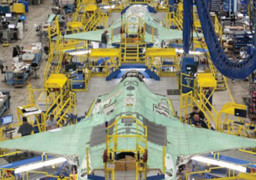|
 |
л°©мң„мӮ°м—… кё°л°ҳмқ„ мһ¬нҷңм„ұнҷ”н•ҳлҠ” лҜёкөӯ |
|
| мҳӨл°”л§Ҳ 집к¶Ң мӢңкё°, R&DлЎң мӨҖ비лҗң мөңмІЁлӢЁ кө°мҲҳл¬јмһҗл“Өмқҙ нҠёлҹјн”„ н–үм •л¶Җмқҳ м Ғк·№м Ғмқё кө°мҲҳл¬јмһҗ мЎ°лӢ¬ лӘ…л №м—җ л”°лқј мғҲлЎӯкІҢ мЎ°м •лҗҳкі л°°м№ҳлҗЁм—җ л”°лқј лҜёкөӯмқҳ л°©мң„мӢ м—… кё°л°ҳмқҙ мһ¬нҷңм„ұнҷ”лҗҳкі мһҲлӢӨ. мқҙлқјнҒ¬ м „мҹҒ мқҙнӣ„, лҜёкөӯмқҳ л°©мң„мӮ°м—… мҲҳмҡ”мҷҖ кіөкёүм—җлҠ” л¶Ҳк· нҳ•мқҙ л°ңмғқн•ҳмҳҖмңјлӮҳ, мӨ‘көӯкіј лҹ¬мӢңм•„м—җ лҢҖн•ң лҜёкөӯкіј к·ё лҸҷ맹көӯл“Өмқҳ лҢҖмқ‘м—җ л”°лҘё ліҖнҷ”к°Җ л°ңмғқн•ң кІғмқҙлӢӨ. м–ҙл–Ө мқјмқҙ мқјм–ҙлӮҳкі мһҲлҠ”к°Җ? |
|
|
 |
What You Do Is Who Y |
|
| АъАЪ | Ben Horowitz |
| ГвЖЗ»з | Harper Business |
|
 |
[RH] мҶҢ비мһҗмқҳ мҳӨл§Ңкіј көҗл§Ңмқ„ мқҙмҡ© |
|
| гҖҢл§ҲмјҖнҢ… кіјн•ҷн•ҷнҡҢ м Җл„җ(Journal of the Academy of Marketing Science)гҖҚм—җ кІҢмһ¬лҗң лҜёмӢңкұҙ мЈјлҰҪ лҢҖн•ҷкөҗ(Michigan State University)мқҳ мғҲлЎңмҡҙ м—°кө¬м—җ л”°лҘҙл©ҙ. вҖҳмҶҢ비мһҗ мҳӨл§Ң(consumer arrogance)вҖҷмқ„ нҷңмҡ©н•ҳлҠ” кІғмқҙ лёҢлһңл“ңмҷҖ м ңн’Ҳмқ„ нҷҚліҙн•ҳлҠ” л§ҲмјҖнҢ… лӢҙлӢ№мһҗмқҳ к°ҖмһҘ нҡЁкіјм Ғмқё м „лһө мқј мҲҳ мһҲлӢӨ. мҳӨл§ҢмқҖ мӮ¬лһҢл“Өмқҙ мһҗмӢ мқҳ мҡ°мӣ”м„ұмқ„ лӢӨлҘё мӮ¬лһҢл“Өм—җкІҢ м•ҢлҰ¬лҠ” кІғмқҙлӢӨ. мҰү, мҶҢ비мһҗ мҳӨл§ҢмқҖ мҶҢ비лҘј нҶөн•ҙ лӢӨлҘё мӮ¬лһҢл“Өм—җкІҢ мһҗмӢ мқҳ мҡ°мӣ”м„ұмқ„ м•ҢлҰ¬лҠ” кІғмқҙлӢӨ. |
|
|
 |
THE TWO-SECOND ADVAN |
|
| АъАЪ | Vivek Ranadive мҷё |
| ГвЖЗ»з | Crown Business |
|
 |
лҶҚм—…мқ„ ліҖнҳҒмӢңнӮӨлҠ” мқёкіөм§ҖлҠҘкіј лЎңлҙҮкіөн•ҷ |
|
| к°ҖмһҘ кё°мҙҲм Ғмқё мӮ°м—…мқё лҶҚм—…мқҙ нҳ„мһ¬ л§ҲмЈјн•ҳкі мһҲлҠ” лҸ„м „ кіјм ңлЎңлҠ” л¬ҙм—Үмқҙ мһҲмқ„к№Ң? мқёкіөм§ҖлҠҘ, лЎңлҙҮкіөн•ҷ, к·ё мҷё кё°нғҖ м •ліҙ кё°л°ҳ кё°мҲ мқҙ лҶҚм—…мқ„ м–ҙл–»кІҢ н–ҘмғҒмӢңнӮӨкі нҡЁмңЁм ҒмңјлЎң л§Ңл“Ө мҲҳ мһҲмқ„к№Ң? |
|
|






 [320]ұЗ
[320]ұЗ 




